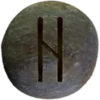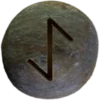Last Updated on October 18, 2024


The draugr, also known as draugar (plural) or draugen, is a restless undead figure from Viking lore. These beings typically guard their burial mounds and treasures, often attacking those who disturb them. Draugar possess immense strength, the ability to change size, and sometimes the power to enter the dreams of the living. They often retain their intelligence, but their primary motive is vengeance or the protection of their grave goods.
These undead figures are physical, unlike the more ghostly spirits seen in other cultures. They can leave their burial mounds to wander the world, often bringing death, disease, or madness to those they encounter. You can identify a draugr by their rotting or bloated appearance, sometimes bearing a dark blue or blackish hue. They have the foul stench of decay, which makes their presence known long before they are seen.
Vikings believed that a person could become a draugr if they led a particularly evil or greedy life. Their body would rise from the grave, continuing the same behaviors that marked their life. Sometimes, draugar are depicted as shapeshifters, turning into animals like seals or large wolves to hunt their prey. To prevent someone from rising as a draugr, people would perform various rituals. For example, they might bind the corpse’s feet, place nails in the soles of the shoes, or position the body upright to make it difficult for the draugr to return from the grave. Viking lore portrays draugar as dangerous, vengeful beings that could only be stopped with powerful countermeasures, including beheading or burning the body.
Elder Futhark Runes Associated with Draugr
The runes Hagalaz and Eihwaz are often linked to draugar. Hagalaz, symbolizing chaos and destruction, reflects the destructive nature of these undead beings. Eihwaz, connected to death and transformation, hints at the transition between life and death. This makes it a fitting rune for creatures like draugar.
Draugr in Asatru
In Asatru, draugar represent the embodiment of unresolved fate and the consequences of greed or dishonor. They serve as reminders of the dangers of dishonorable actions and disrespecting the dead. As practitioners honor their ancestors, draugar warn them of the power lingering beyond death if the living fail to uphold their duties to the community or family.


